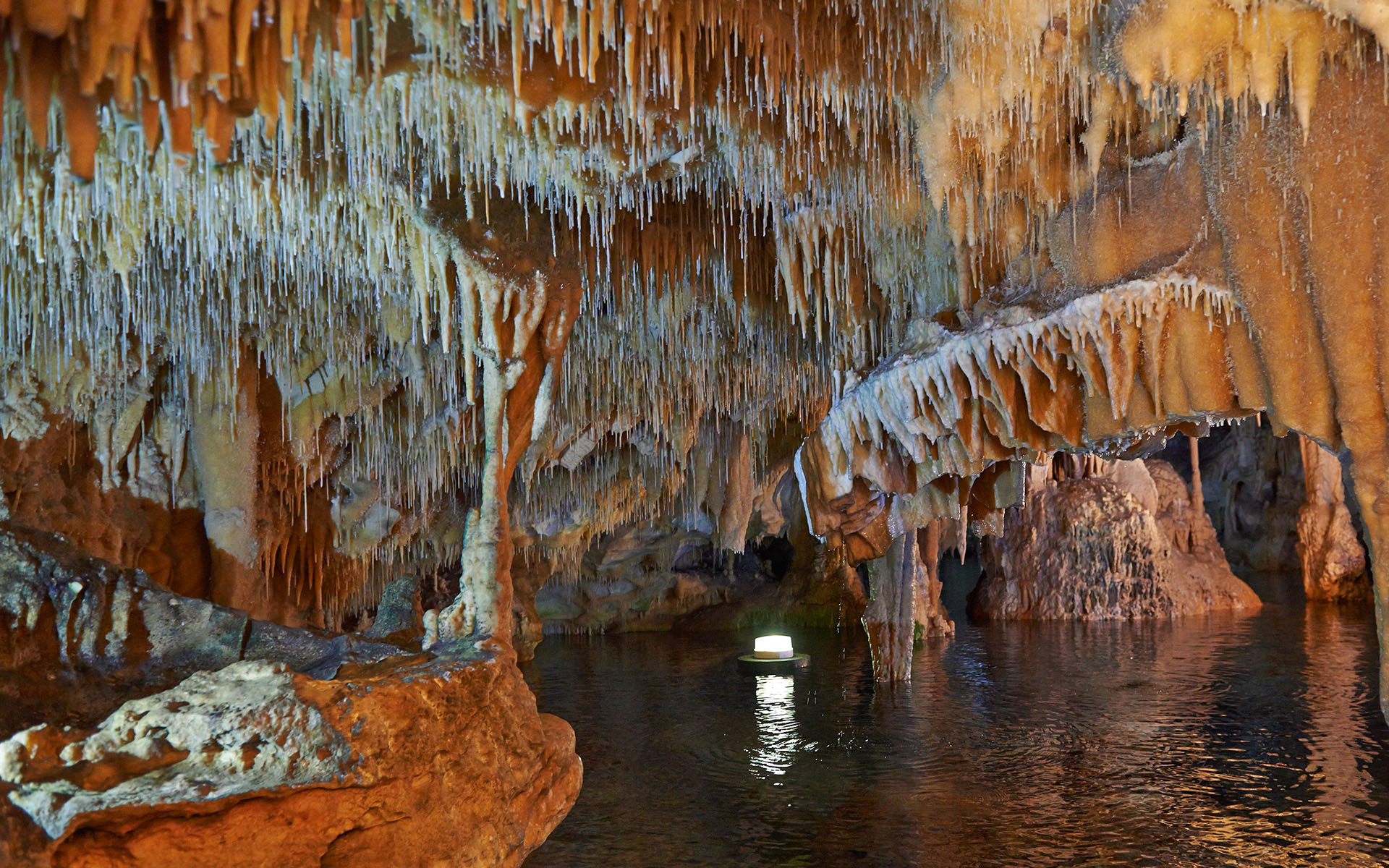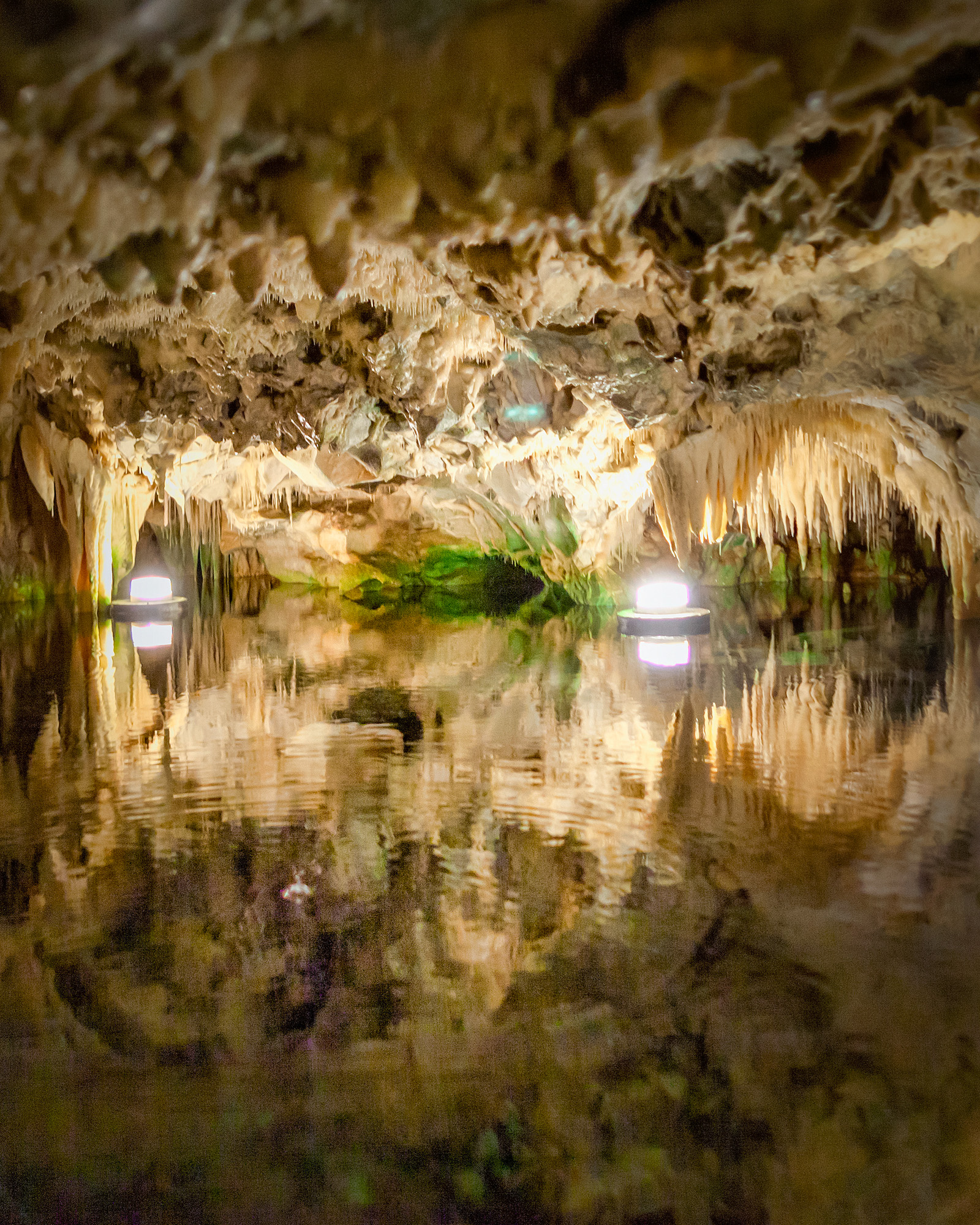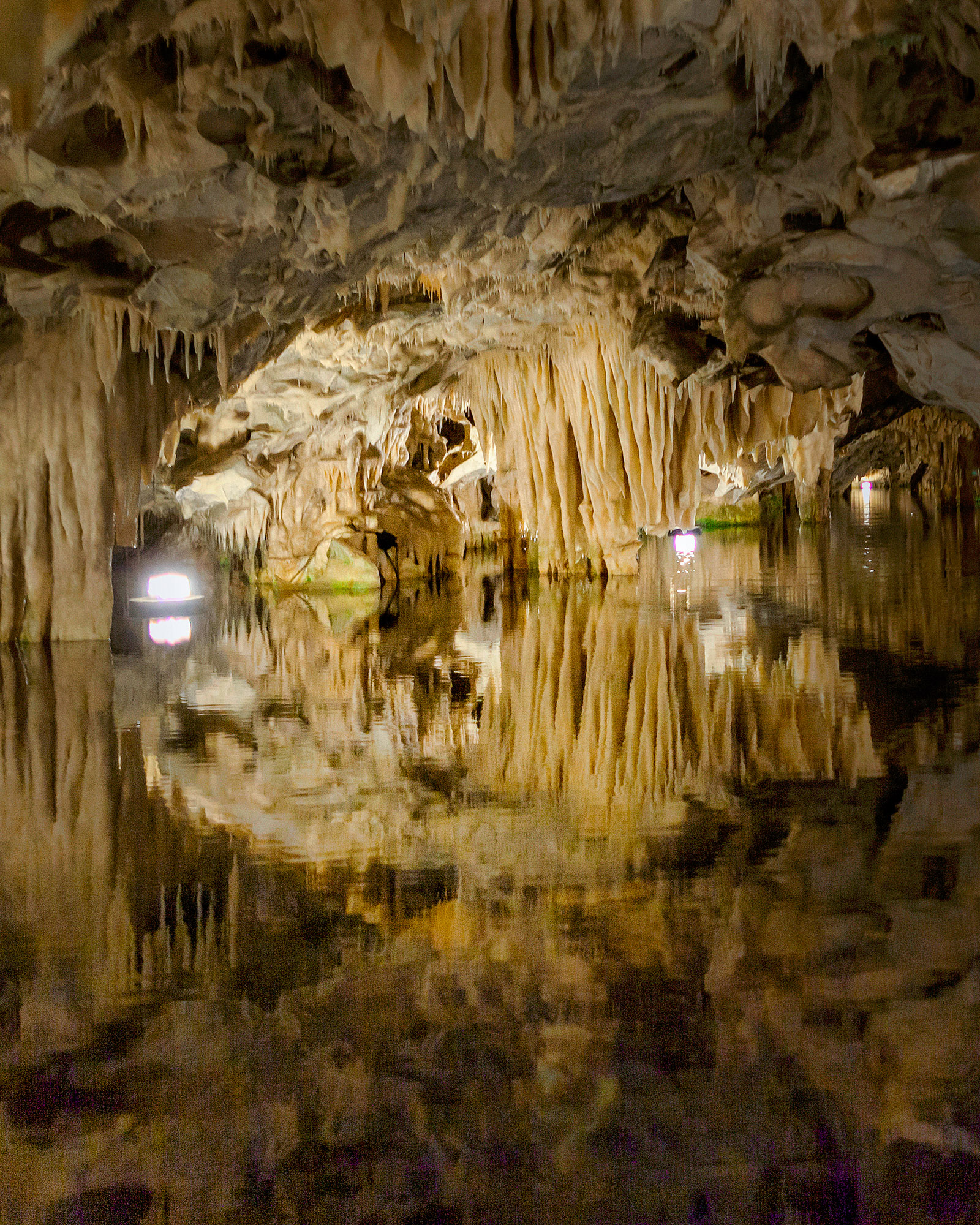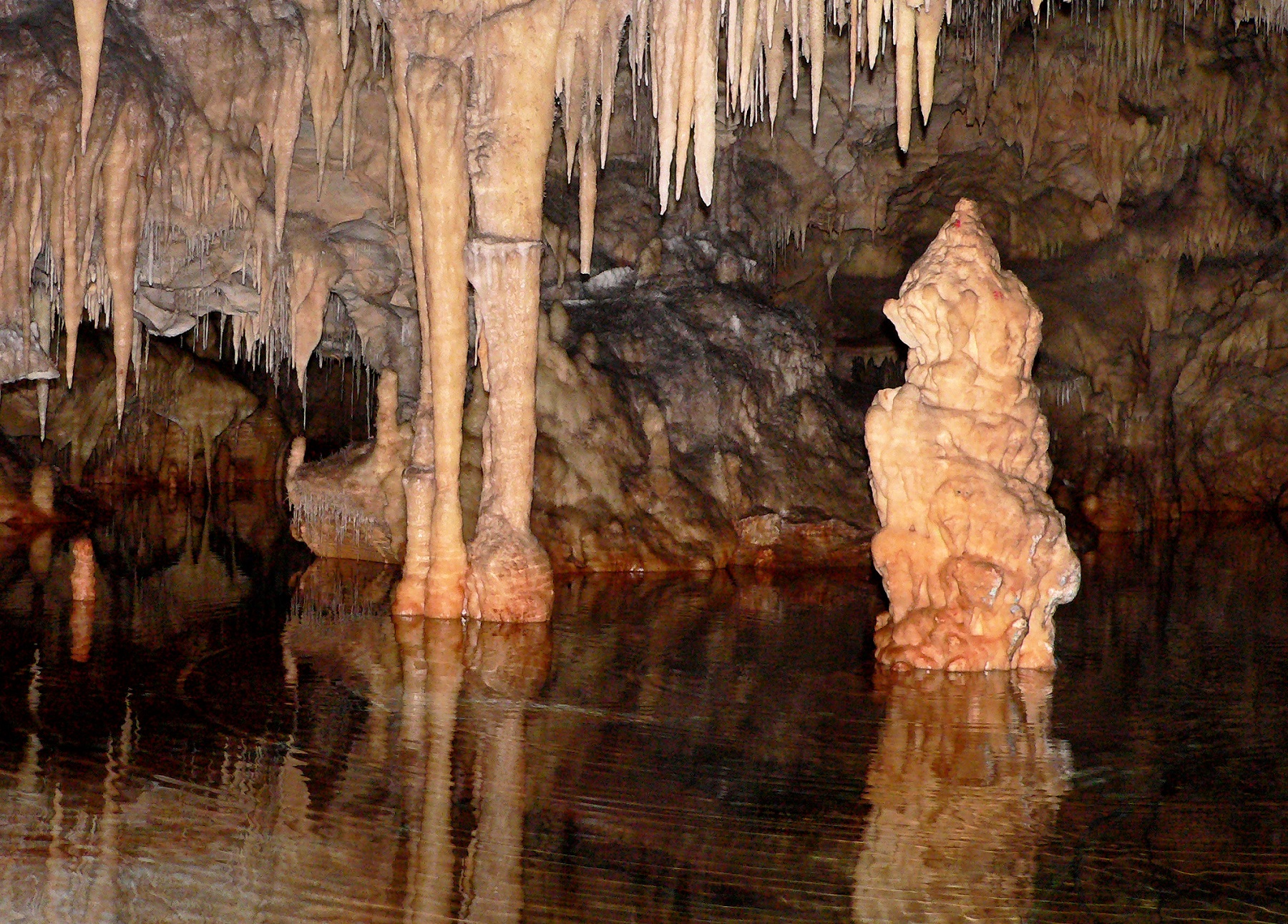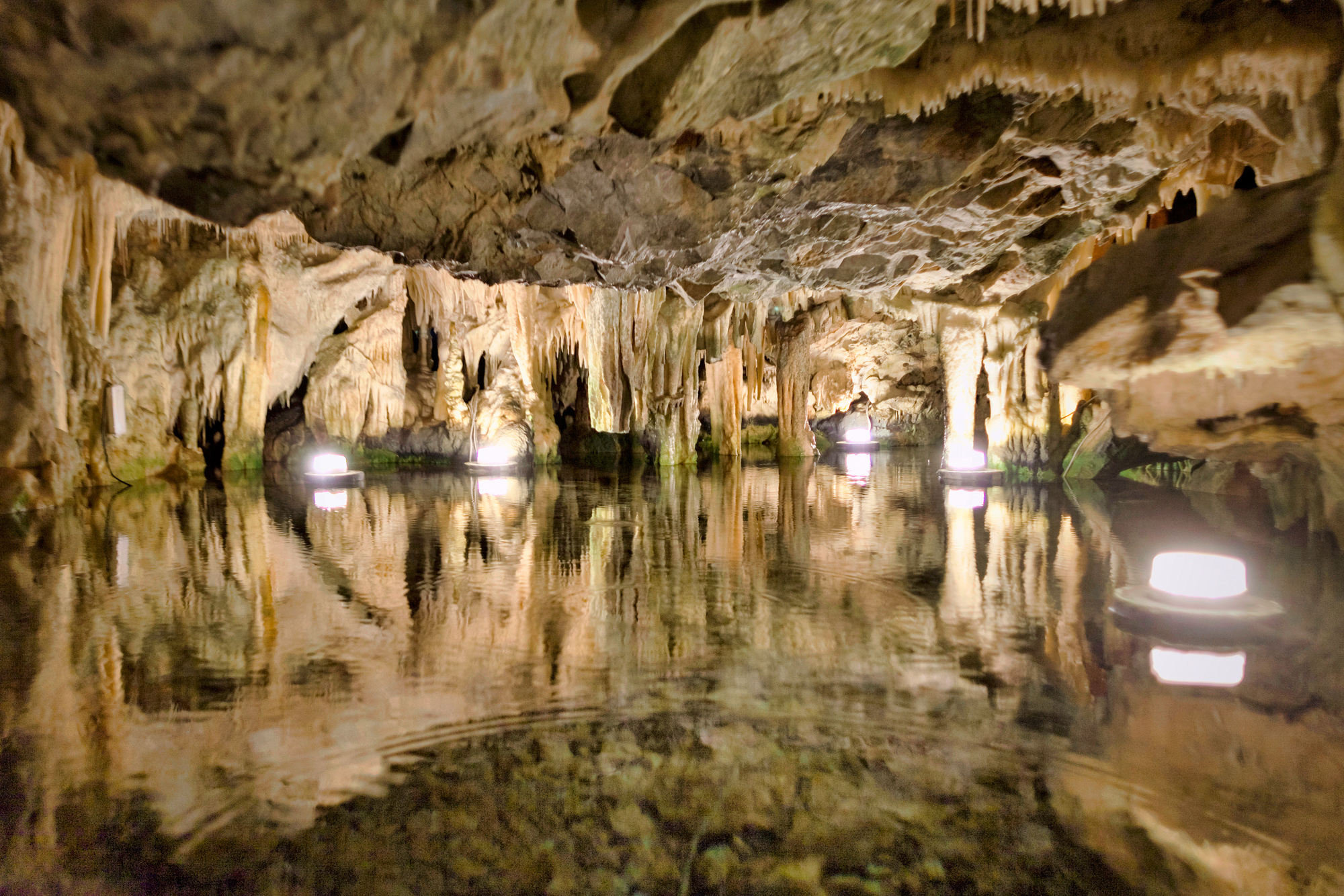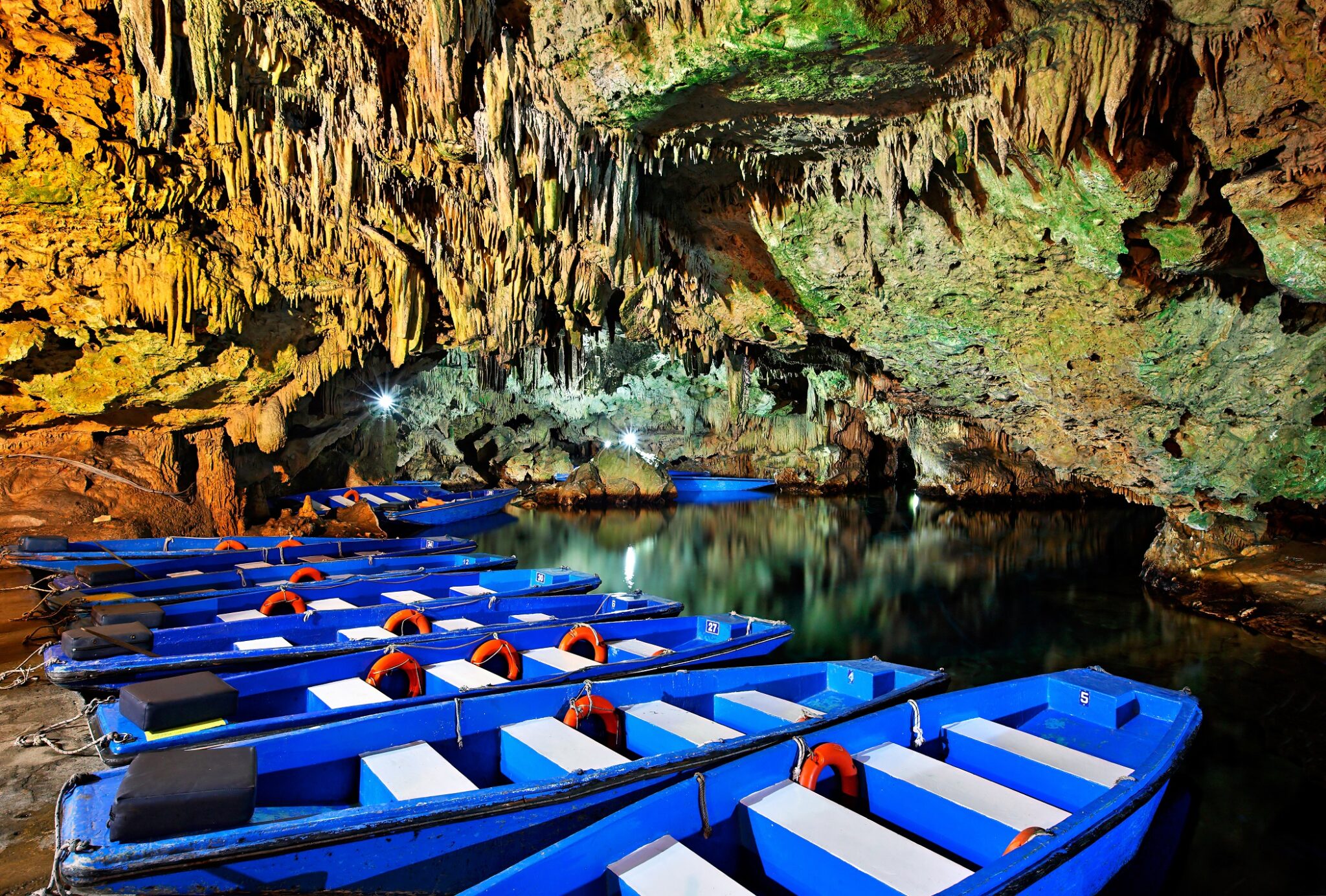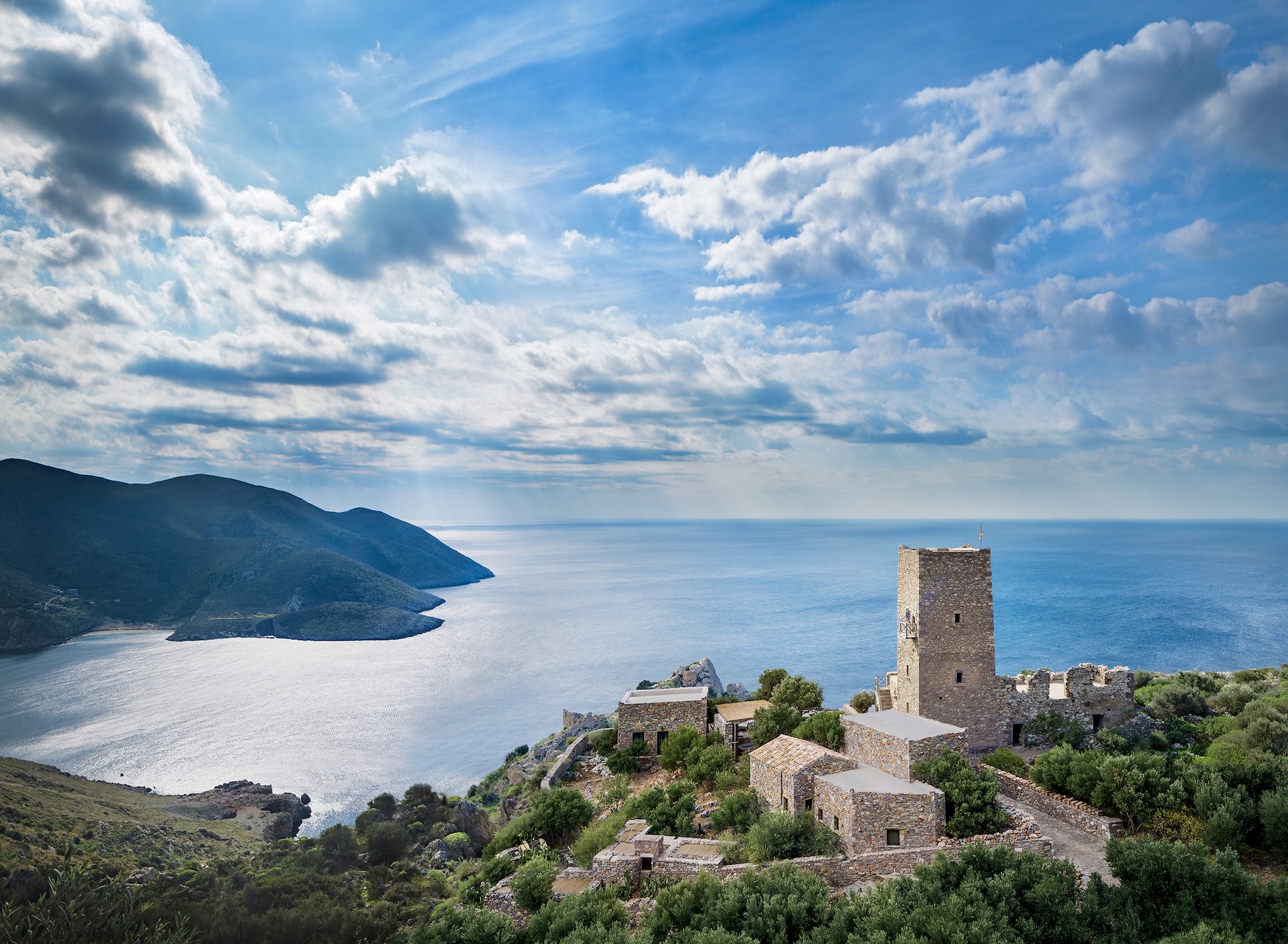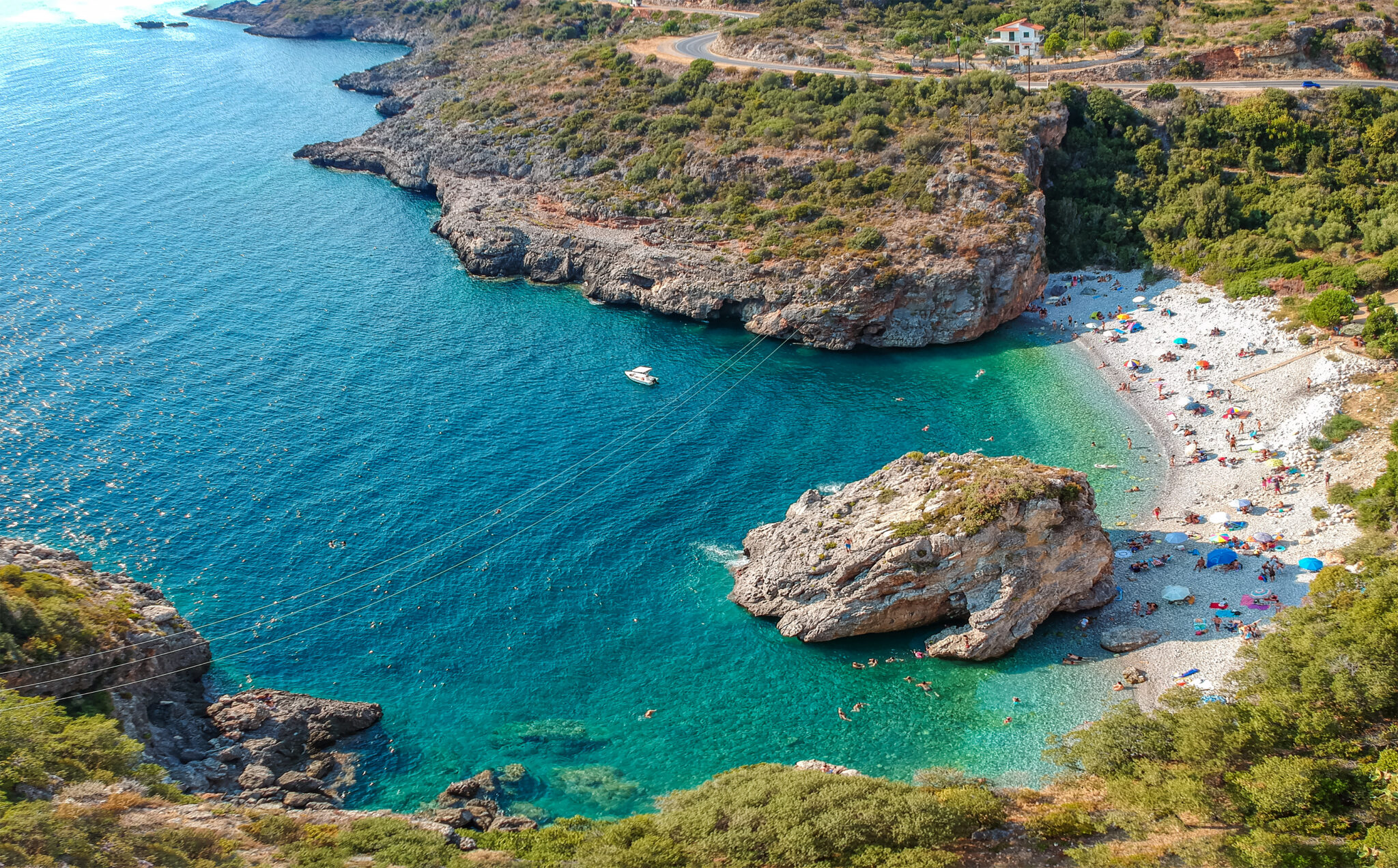A look at articles, printed and online, covering the Diros cave causes confusion as to whether this attraction is comprised of one cave or more.
It should be pointed out that the Diros cave system, featuring stalactites and stalagmites, and whose majority can be covered by boat, is one cave, named Vlyhada, also known as Glyfada.
The misunderstanding is prompted by the existence of a neighbouring cave, just 220 metres away, Alepotrypa, which was inhabited by humans during the Neolithic period.
They may have believed the cave was the entrance to the Underworld. Occasionally, a nearby cave, Katafygi, at the village Selinitsa, is also referenced, causing even greater confusion.
Passing through the cave
The Vlyhada cave is often referred to as the Diros cave as it is situated at Diros bay, on the western coastline of the Mani area that is part of the Lakonia regional unit. Locals seem to have known about the cave from as far back as 1898, but it was not until 1949 when exploration began taking place in a more organised fashion, courtesy of an expedition by Giannis and Anna Petroheilos, co-founders of the Hellenic Speleological Society. The first underwater exploration took place in 1970.
The results of modern-day research indicate that the cave’s formation began millions of years ago. Researchers have also determined that more cave entrances existed in the past, but they closed through natural developments. Nowadays, just one entrance exists. It measures half a metre in width and is close to the sea’s surface.
Excavation work within the cave has led to the discovery of fossilised bones of lions, panthers, hyenas and hippopotamuses, offering an idea of the type of fauna that inhabited the area 2 million years ago, when this Mani cave was entirely on land. Nowadays, it is impossible to cross without using a boat. The biggest part of the cave is beneath the ground’s surface, where two subterranean rivers flow.
The length of the cave’s explored section is estimated to exceed 15 km, its deepest point being approximately 80 metres. Visitors do not pass through this point. The water at most of the section open to visitors is brackish. The temperature within the cave ranges between 16 and 19 degrees Celsius, depending on the season. Visitors considering such temperatures to be a little too cold for them are advised to dress accordingly.
The cave also has amazing acoustics. Not coincidentally, in 1971, the Greek National Tourism Organisation invited French composer Pierre Arnaud to record inside the cave. The initiative resulted in the release of an album titled “Music From The Caves Of Diros”, as it also included recordings from the Alepotrypa cave.
Spectacular stalagmites and stalactites that formed drop by drop, over hundreds of thousands of years, captivate visitors. Vlyhada is regarded as one of the world’s three most impressive caves, in its category, along with Lebanon’s Jeita Grotto in Beirut and Le Gouffre de Padirac in Gramat, France. Some of the amazing formations at the Vlyhada cave include “Mandyas tou Poseidona” (Cloak of Poseidon), at the first gallery, “Megali Thimonia” (Great Haystack), “Petrinos Krinos” (Stone Lily), “Roz Diamerismata” (Pink Apartments), “Nyfikes Klines Ton Neraidon” (Bridal Beds of the Fairies), “Thalassa ton Navagion” (Sea of Shipwrecks) and Sokolatenia Sala (Chocolate Hall).
How to get there
Vlyhada cave is under the administrative control of Pyrgos, the main town in the Diros area, approximately 1.5 km from the cave, in a direction headed towards the sea. Since it was opened to the public in 1967, the cave has been open all year round. As expected, a greater number of people visit in summer. The cave section open to visitors measures 1,500 metres, of which 1,200 metres is covered by boat. It takes between 25 and 30 minutes to cover the total distance.
Visitors travelling to the cave may start from Sparta or Kalamata. From Sparta, the route runs via Gytheio, then Areopoli, followed by Pyrgos. From Kalamata, the route runs by Oitylos, then also to Areopoli. The cave is just 3.1 km from Areopoli, or approximately 15 minutes away.
It is strictly forbidden to detach rocks at the cave as it is considered a natural monument and part of the country’s cultural heritage. Any such action is a criminal offense.
Read also:
Colourful underwater worlds of Pothitos, Pothitaki, islets just off the wider Athens area



